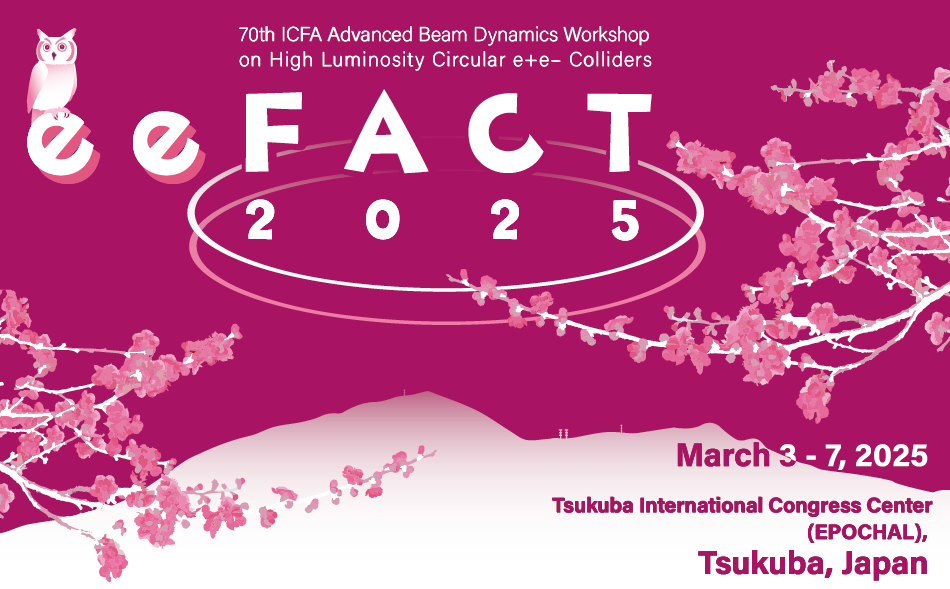Yun Luo, F. Willeke, Yue Hao, J. Qiang, D. Xu, M. Blaskiewicz, C. Montag
The Electron-Ion Collider (EIC), to be constructed at Brookhaven National Laboratory, will collide polarized high-energy electron beams with polarized hadron beams, achieving luminosities up to 1 × 10^{34} cm^{−2} s^{−1} in the center-of-mass energy range of 29-140 GeV. To achieve such high luminosity, we adopt high...
A nonlinear collimation system (NLC) was introduced into the SuperKEKB low energy ring (LER), a 4 GeV positron ring, during the first long shutdown (LS1) to reduce the impedance in the vertical direction. We built the impedance model of the LER after LS1 and simulated the tune shift as a function of the bunch current and the single-bunch collective instability for this model using PyHEADTAIL....
The beam stability in the FCC-ee collider is highly sensitive to impedance sources. Developing a flexible and comprehensive impedance model is crucial for accurately evaluating and mitigating instabilities as machine parameters evolve.
This study investigates the current impedance budget of FCC-ee, with a particular focus on the geometric effect of the collimation system, identifying it as a...
VEPP-2000 electron-positron collider operating in the beam energy range of 150-1000 MeV is the only machine originally designed to exploit Round Beams Concept which results in significant beam-beam limit enhancement. After long shutdown for injection chain upgrade VEPP-2000 resumed data taking with luminosity limited only by beam-beam effects.
Thanks to extensive and thorough machine tuning...
The Super Tau-Charm Facility (STCF) is designed to achieve a peak luminosity of $1 \times 10^{35}\ \text{cm}^{-2}\text{s}^{-1}$ using the crab waist (CW) collision scheme. Its design is currently underway, led by the USTC team in China. In this study, we investigate the impact of beam-beam effects on the STCF design by performing both weak-strong and strong-strong beam-beam simulations, with...
There are several issues to limit the luminosity performance of SuperKEKB. We discuss mechanism of Sudden Beam Loss (SBL), -1 head-tail mode instability related to bunch-by-bunch feed back system, and coherent and incoherent beam-beam phenomena.
The beam-beam interaction related studies at CEPC are presented. The beam-beam limit, combined effects of beam-beam and longitudinal/transverse impedances, and mitigation study of coherent beam-beam instability are discussed. The effects of optics error on beam-beam performance are also presented. Some simulation on crosstalk between beam-beam interaction and lattice is also shown.
The instability of the electron beam interacting with the residual ions in the EIC electron storage ring (ESR) was identified as a concern during the early design stages. Both the multi-turn (with ion accumulation) and single-turn (also known as “fast-ion” type) versions of the instability could potentially lead to large oscillations of the beam centroid, degrading the collision rate and...

